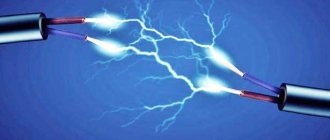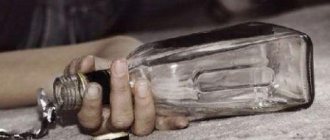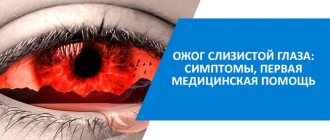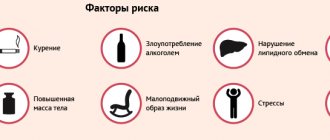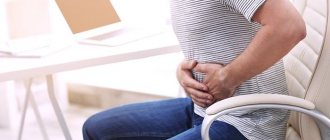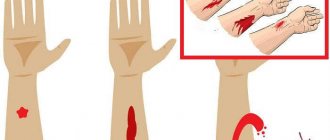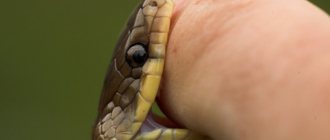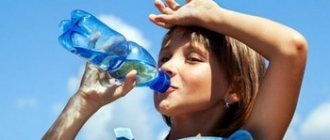Sunstroke (lat. apoplexia solaris; heliosis) is a painful condition, a disorder of the brain due to intense or prolonged exposure to sunlight on the surface of the head. The body receives an excessive dose of heat and ultraviolet radiation without having time to cope with heat transfer. This provokes negative consequences. When overheated, sweating is disrupted, the normal rhythm of blood circulation is disrupted, the concentration of free radicals in tissues and cells increases, causing intoxication of the body, and the general condition worsens.
General information
Sunstroke is a pathological condition that occurs under the influence of direct sunlight. As a rule, it develops during outdoor recreation (for example, on the beach), but can also be observed in the mountains, at relatively low air temperatures, since, unlike heatstroke, it is caused by overheating of only the head, and not the entire body. It can affect people of any age and gender, but is especially dangerous for children, the elderly and patients with certain chronic somatic diseases.
The consequences of sunstroke are impaired blood circulation and sweating, as well as a lack of oxygen in the tissues. First of all, the central nervous system is affected; in severe cases, the activity of all organs and systems is seriously disrupted, coma and death are possible. Treatment of sunstroke is carried out by specialists in the field of resuscitation, traumatology and orthopedics, cardiology, and neurology.
Symptoms in adults
First of all, sunstroke affects the circulatory and nervous systems. With longer exposure to the sun, the effects move to other organs and systems of the body, which can lead to serious consequences.
The main symptoms of this pathology are:
- Weakness - caused by the effects of sunlight on the central nervous system, depleting it. This symptom includes fatigue and drowsiness;
- Thirst – occurs due to exposure of the skin to the sun, thereby causing partial dehydration of the body. Dry mouth appears;
- Dizziness - the direct effect of the sun on a person’s head and brain leads to an effect on the central nervous system, causing disorientation in space. With continued exposure to rays, headache or loss of consciousness occurs;
- Rising temperature - occurs due to excessive overheating of the body;
- Tachycardia (rapid heart rate) - occurs due to vasodilation, which subsequently leads to increased blood pressure, which in turn contributes to nausea and vomiting. With further exposure to the sun and failure to provide assistance, there is a possibility of heart rhythm disturbances and the development of cardiac pathologies;
The totality of all symptoms or most of them indicates a severe version of the onset of sunstroke, in which it is necessary to take urgent measures to provide first aid and transport the victim to the hospital.
Causes
Sunstroke develops under the influence of the sun at its zenith - at this time, the sun's rays at a minimum angle affect the maximum possible area. The immediate cause of the occurrence may be work, outdoor recreation, walking or being on the beach from 10-11 to 15-16 hours of the day. Provoking factors include windless, stuffy weather, lack of headwear, overeating, improper drinking regimen, drinking alcoholic beverages and taking medications that reduce the body's ability to thermoregulate (for example, antidepressants). The likelihood of developing this pathology increases with hypertension, vegetative-vascular dystonia, heart disease and obesity.
Diagnostics
Do I need to see a doctor? A similar question is asked by many who have suffered sunstroke to one degree or another. Some, however, are simply confident that this is not even considered a pathology, so seeing a doctor is not required. However, visiting a specialist is simply necessary, even if you have suffered a mild degree of sunstroke. This is argued by the fact that with this pathology, the brain first suffers, and then all body systems. In the case when symptoms of sunstroke (weakness, malaise) were detected in a mild degree, the effect on the brain and central nervous system has already been completed.
It is necessary, at a minimum, to consult with a doctor who will conduct an examination and, if necessary, prescribe tests and instrumental examination methods. Based on this, a conclusion will be made about how much the body has suffered from sunstroke and what measures should be taken.
The diagnosis is established during a consultation with a traumatologist, therapist, neurologist or other specialist, taking into account the patient’s complaints, anamnestic data (stay under the sun at its zenith) and the results of an external examination. To assess the severity of the victim:
- pulse is measured,
- blood pressure and body temperature.
Pathogenesis
Direct sunlight heats the head, resulting in hyperthermia of all parts of the brain. The membranes of the brain swell, the ventricles fill with cerebrospinal fluid. Blood pressure rises. The arteries in the brain dilate, and small vessels may rupture. The work of the nerve centers responsible for vital functions is disrupted - vascular, respiratory, etc. All of the above creates conditions for the occurrence of both immediate and delayed pathological changes.
Read also: Jellyfish sting: consequences and what to do if you are stung by a jellyfish.
In severe cases, asphyxia, extensive cerebral hemorrhage, acute cardiovascular failure and cardiac arrest may develop. Long-term consequences include disruption of the reflex, sensory and conduction functions of the brain. In the long term, headaches, neurological symptoms, difficulty coordinating movements, visual impairment and diseases of the cardiovascular system may occur.
Types of pathology
Doctors distinguish several degrees of damage in a condition such as sunstroke. The symptoms and consequences of the pathology directly depend on them:
- Mild degree. It usually occurs after 6-8 hours of exposure to the sun. The signs are not clearly expressed. Characteristic symptoms are dilated pupils and rapid breathing.
- Middle stage. It is easy to distinguish by impaired coordination of movement. Other unpleasant symptoms may often occur. The person needs immediate help. Otherwise, the condition threatens to move into the next form.
- Severe degree. This stage manifests itself extremely strongly. High probability of death. Severe treatment occurs only in a hospital setting under medical supervision.
Let us consider in more detail what signs characterize each degree of damage.
Symptoms of sunstroke
Sunstroke is accompanied by headache, lethargy, and vomiting. In severe cases - coma. Symptoms of overheating worsen as the ambient humidity increases. More specific signs of sunstroke largely depend on the degree of damage to the body. Let's look at them:
Mild degree
- general weakness;
- headache;
- nausea;
- increased heart rate and breathing;
- pupil dilation.
Measures: remove from the overheated area, provide assistance. In case of nausea and vomiting, position the patient in such a way as to avoid choking on vomit.
Average degree
- severe adynamia;
- severe headache with nausea and vomiting;
- stunned;
- uncertainty of movements, dizziness;
- unsteady gait;
- at times fainting;
- increased heart rate and breathing;
- nosebleed
- increase in body temperature to 39-40°C.
Severe form
A severe form of sunstroke develops suddenly. The face is hyperemic, later pale cyanotic. There have been cases of changes in consciousness from mild to coma, clonic and tonic convulsions, involuntary release of urine and feces, delirium, hallucinations, increased body temperature to 41-42°C, and cases of sudden death. Mortality 20-30%.
External signs of heat stroke
Overheating occurs due to prolonged exposure to heat, high humidity or the sun. The problem develops gradually, the speed depends on many factors. Everyone needs to know how heat stroke manifests itself externally, because a person himself may not notice that overheating has begun. With it, the victims experience the following changes:
- local redness of the face and body, an unnatural blush appears;
- the skin becomes dry and too hot to the touch;
- the person is breathing heavily;
- in case of a moderate impact, a person’s coordination of movements is impaired;
- pupils dilate.
Conditions for getting sunstroke
The risk of getting sunstroke increases under the following conditions:
- direct exposure to sun rays on the head;
— increased environmental humidity;
— the presence of special health problems (vegetative-vascular dystonia, heart disease, hypertension, endocrine disorders, obesity);
- age up to 1 year (especially newborns) and elderly people (in children, the natural thermoregulation of the body is not yet sufficiently perfect, and in the elderly it already functions poorly);
- excess body weight;
- smoking;
- alcohol intoxication;
- nervous tension and stress.
Consequences for the body
In addition to exacerbations of diseases that can lead to death, sunstroke and heatstroke can provoke these diseases. The most serious consequences of overheating of the body include:
- ophthalmological problems,
- cardiovascular diseases,
- neurological pathologies up to stroke,
- impaired coordination of movements, etc.
This is explained by the fact that prolonged exposure to sunlight on the cerebral cortex will not go unnoticed by the body and leads to all sorts of problems, ranging from headaches to fatal pathologies. Therefore, prevention and timely assistance with sunstroke is so important.
The severity of symptoms of sunstroke and heatstroke depends on the patient’s age and the presence of concomitant pathologies. The symptoms of heat stroke in children are the same as in adults, but in children they will be more pronounced. The only symptom that is more typical for children is the occurrence of nosebleeds.
First aid for sunstroke
Some people think that this condition is not a serious problem and that they can help themselves.
It is difficult for a person without medical knowledge to assess the severity of the condition, and delay is fraught with complications. Timely assistance will help save the patient's life.
Specialists will carry out therapy measures and determine whether hospitalization is necessary.
Until the ambulance arrives, the following assistance actions are necessary:
- immediately move the victim to a breeze, hide from the sun;
- help you lie down, put a pillow under your head if you have one, or simply roll up your clothes;
- when vomiting, turn your head to the side to ensure free passage of vomit;
- also put something under your feet in the ankle area;
- remove clothing that restricts movement;
- unfasten the top buttons;
- be sure to give cool water and plenty of it;
- moisten your face with cold water or cover it with damp gauze or other cloth;
- if you lose consciousness, bring a tampon soaked in ammonia to your nostrils;
- create a flow of air by frequently fanning or directing a fan.
Read also First aid for arrhythmia, symptoms and treatment
After this, wait for the doctors to make a verdict on whether treatment in a hospital is required or you can get by with special procedures at home.
Recovery will take several days. During this time, blood circulation is normalized, the negative effects of overheating are neutralized, and the nervous system is restored.
Physical methods to help with sunstroke
By competently combining methods of providing assistance to the victim, you can avoid serious consequences. The main task is to enhance heat transfer by the body. The following manipulations are effective for this:
- point a fan at the patient or provide air flow from outside;
- wipe with alcohol (doctors do not confirm the effectiveness of the procedure);
- enemas for five minutes, with cool water;
- Apply pieces of ice to your head.
European experts recommend additional rinsing of the stomach with salt water, intravenous administration of glucose (4 degrees) - a dropper, which reduces fever.
For a slight increase in temperature, it is good to give Ibuprofen and Paracetamol.
Body temperature indicators during heliosis
One of the constant and obligatory manifestations is temperature during sunstroke. Its growth is caused by dilation of blood vessels and increased blood flow to the periphery. The heat is so strong that it can even be felt tactilely. Fever increases quickly and within 30-40 minutes can reach values of 39 degrees Celsius or higher. The maximum temperature during heliosis is 42 degrees.
How to help your child
Self-medication in the case of children is unacceptable, but until the doctors arrive, or everything happens outside the city, you must be able to provide first aid. What to do first:
- hide the child in the shade, provide air flow, but without fanaticism, no air conditioning; sudden temperature changes are inappropriate;
- put the child on his side so that he does not choke while vomiting;
- If possible, remove all clothing;
- be sure to give something to drink, it should be cool water (not cold), no sweet drinks;
- If you lose consciousness, cover your head with a towel or cloth soaked in lukewarm water. Applying ice to the head is contraindicated. Strong temperature changes can cause blood vessels to contract, and this will only worsen the situation.
Treatment methods
The arriving medical team will take all measures to relieve the symptoms caused by sunstroke. Doctors will tell you how to treat the consequences of this condition after the examination. If the patient develops a severe form, the person is subject to mandatory hospitalization.
Treatment methods depend on the symptoms caused by sunstroke:
- Intravenous administration of sodium chloride allows the water-salt balance to be restored.
- If the patient has asphyxia or heart failure, then doctors give a subcutaneous injection of Cordiamin or Caffeine.
- For high blood pressure, the patient is given antihypertensive medications and diuretics.
In a hospital setting, a full range of resuscitation measures can be used:
- intravenous infusions;
- cardiac stimulation;
- intubation;
- oxygen therapy;
- stimulation of diuresis.
Preventing sunstroke
- protect your head with a light, light-colored hat that is easily ventilated, and your eyes with dark glasses;
- avoid prolonged exposure to the sun or the beach;
- avoid being in open spaces with direct sunlight (especially during the period of active sun: from 12.00 to 16.00). In countries close to the Equator - from 10.00 to 17.00;
- at first, the duration of sunbathing should not exceed 15-20 minutes, then it can be gradually lengthened, but not more than two hours and always with breaks;
Read also First aid for a stroke: what to do at home?
— it is better to sunbathe not while lying down, but while moving; sunbathing in the morning and evening hours and not earlier than an hour after eating. It is useful to combine them with bathing;
- wear light, light-colored clothing, made from natural fabrics, easily ventilated (linen, cotton) and not preventing the evaporation of sweat;
— in hot weather, do not eat too much. Give preference to fermented milk products and vegetables;
- maintain water balance in the body (preferably with cool water - drink about 3 liters per day) to prevent dehydration;
- use a sun umbrella (light shades);
- from time to time wipe your face with a handkerchief dipped in cool water;
- If you feel unwell, seek help and take possible measures yourself.
To avoid sunstroke, in hot sunny weather it is recommended to wear hats made of light-colored material that reflects sunlight more strongly.
Problems from the head
There are several factors that contribute to the development of heat and sunstroke. Knowing about them, you can avoid serious complications. Firstly, you need to ensure that your head does not overheat outside - in particular, wear hats. When it comes to clothing, choose loose, loose pieces that don't cling to your body. When indoors, do not forget to ventilate and cool it. Secondly, in order for the body to successfully cope with stress, doctors advise not to drink alcohol or smoke. It is also worth limiting the intake of medications that can dull sensations and cause drowsiness.
Try to avoid stress and nervous tension. This is especially important for people who are overweight, have cardiovascular and endocrine diseases, and neurological problems. Provide yourself with free access to cool drinking water. Drink fluids in sufficient quantities and as often as possible (in the heat - at least two and a half liters of water per day).
Children are at particular risk. Unlike adults, they cannot track the nuances of their physical state and often find it difficult to describe what is happening to them. If a child becomes lethargic in the heat, complains of a headache and poor health, then this is most likely not just mood swings.
Babies' bodies are not able to regulate their temperature on their own, so it is better for them to be in the shade. To replenish your water balance, it is better to drink not soda or juice, but simply still water.
Prognosis and prevention
The prognosis is usually favorable. The list of preventive measures is determined by the specific situation, state of health and age of the person. General recommendations include mandatory head protection from sunlight. It is better to use scarves, panamas and hats in reflective shades. It is necessary to wear light-colored clothing made from natural materials. You should not work or rest in direct sunlight from 11 a.m. to 4 p.m.
When hiking or performing professional duties that involve exposure to the sun, you should take regular breaks and rest in a cool, shady place. It is important to maintain a drinking regime and drink at least 100 ml of liquid every hour. Sweet carbonated drinks are not recommended; plain or table mineral water is better. Strong tea, coffee and alcohol are contraindicated. You should not overeat on vacation or before going out - this creates additional stress on the body. If possible, take a cool shower during the day and wet your hands, feet and face with water.
After suffering a sunstroke of any severity, it is recommended to consult a doctor in order to promptly identify negative consequences and exclude latent chronic diseases that could increase the likelihood of developing this pathological condition. For several days you need to limit physical activity, avoid exposure to heat and sun, otherwise the risk of developing a second stroke increases. If possible, you should observe bed rest, this will give the body the opportunity to restore the functions of the nervous system, biochemical blood parameters and the level of metabolic processes.
Tags: sunstroke, signs of sunstroke, sunstroke symptoms, help for sunstroke, first aid for sunstroke, treatment of sunstroke, sunstroke first aid, consequences of sunstroke, symptoms of sunstroke
Risk factors
In addition, it is important to understand that some people, due to their individual characteristics, are more susceptible to sunstroke. Most often, the pathology is observed in children and the elderly. Pregnant women are at risk.
An unpleasant condition is often observed, as well as negative consequences after sunstroke due to the following factors:
- The presence of chronic pathologies (ischemia, hypertension, thyroid diseases, bronchial asthma, hepatitis, diabetes, mental illnesses).
- History of heart attack or stroke.
- Tendency to allergic reactions.
- Hormonal disorders.
- Obesity.
- Hyperhidrosis and anhidrosis.
- Drug or alcohol intoxication.
- Meteor dependence.
- Use of diuretics, lack of drinking regime.
- Excessive physical labor.
- Taking medications: tricyclic antidepressants, amphetamines, MAO inhibitors.
How many days do the effects last?
If sunstroke was mild and its consequences were not pronounced, then within a day the victim’s condition will normalize, although general weakness may be present for another 2-3 days. A more severe form of the painful condition requires the provision of qualified medical care, hospitalization of the victim, and in this case the recovery period can last 7 days - 1 month.
If a person falls into a coma, even doctors cannot predict the period of rehabilitation and recovery. It all depends on the general state of health, the age of the victim, and the level of the immune system.
Useful video
Watch the video about first aid for heat and sunstroke:
Similar articles
- Heatstroke and sunstroke: what is the difference between a burn and a stroke...
Heatstroke and sunstroke occur. They are both dangerous to humans. Particularly severe consequences from sunburn and heatstroke can occur in a child. Signs of overheating - burns, fainting, fever, etc. What is the difference between thermal and solar? How to provide assistance? What are the preventive measures? Read more - Consequences of sunstroke: what happens in children...
The effects of sunstroke appear relatively quickly in children; in adults, the process drags on for several hours. It is important to understand not only how to treat, but also when to call an ambulance. How many days a sunstroke lasts depends on the extent of its damage. Read more
- Chills after the sun: why and what to do after sunbathing
If you feel chilly after the sun, then this is a sure sign of a burn. If there are no more severe symptoms - vomiting, high fever, then you can make compresses from traditional medicine or use medications. If you have them after sunbathing, you should consult a doctor. Read more
- Is it possible to sunbathe with a cold, ARVI and other ENT...
Doctors are sure that you can sunbathe if you have a cold, but only taking into account other circumstances. For example, how will taking medications affect you, whether a simple acute respiratory viral infection under the influence of the sun will develop into sinusitis, and whether or not you have a fever with an ENT disease. Read more
- How long does redness last after sunbathing?
How long redness lasts after sunbathing is influenced by two factors - individual reaction and the degree of burn. For example, with mild redness it will be possible to get rid of it in 2 days, with severe hyperemia it will take up to 10 days. What can I do to speed up healing time? Read more
Fainting
This condition occurs due to spasm of cerebral vessels. Blood flow to this organ is significantly reduced, causing the body to switch to a mode in which energy is saved as much as possible.
Visual symptoms of fainting are:
- pale skin;
- constriction of the pupils;
- weakening of the pulse;
- slow breathing (it becomes shallow);
- limbs become cold;
- the forehead becomes covered with drops of sweat.
First aid
- The first procedure necessary in case of fainting is to lay the victim on any flat surface. The head should be located no higher than the level of the body, maybe even slightly below it. This is necessary to ensure an increase in blood flow to the brain.
- The victim must be provided with the opportunity to breathe normally. For this purpose, you need to open a window in the room, letting fresh air into the room, unfasten his belt, collar, and remove any clothes that constrain the body.
- It is imperative to insulate a person’s body, for which it is recommended to place heating pads at his feet. It is advisable to rub the chest, back and limbs with vodka. When it is not at hand, you can rub it with dry hands.
- If ammonia is available, they should moisten a cotton swab and then bring it to the nose of the person who has lost consciousness. This manipulation must be performed every 10 seconds. When ammonia is not available, you can use onion juice, vinegar or another product that has a pungent odor.
- The very first aid also consists of sprinkling cold water on the victim’s face, then lightly patting him on the cheeks.
- First aid ends by bringing the person to consciousness and giving him the opportunity to drink sweet coffee or strong tea. After this, you need to give him Valocordin, diluting 10–15 drops of the medicine in ¼ glass. As a last resort, valerian (20-30 drops) will help.
If after the onset of fainting the face does not become pale, but turns red, then there is a hypertensive crisis or sunstroke. First aid provided for such fainting begins with raising the human head above the level of the body, applying ice or other cold to the face. In this case, a doctor must be called immediately.
Possible complications
Sunstroke is a serious illness that should be treated with caution. The strength of the consequences depends on the degree of exposure to adverse factors. Dangerous complications of sunstroke include:
- cerebral edema, stroke;
- renal failure;
- pulmonary edema;
- heart disease, heart attack;
- dehydration;
- disruption of internal organs;
- blood diseases: leukocytosis, thrombocytopenia, increased coagulability;
- dysfunction of the central nervous system and coordination of movements.
What to do if a sleeping child has a high temperature
It is impossible to give a definite answer to the question of what to do if the child’s temperature rises during sleep. All parental actions should be based on the big picture.
Changing your baby's diaper to a lighter one will help lower his body temperature.
If a baby develops a fever due to overheating, the blanket can be replaced with a light diaper, and the baby’s condition will return to normal. When the cause of a fever is illness, medical attention may be required.
Should you wake up your child if they have a high temperature?
The decision about whether a child with a fever can sleep will depend on how much the thermometer reading exceeds the norm.
Is it possible to take measurements while sleeping?
It can be difficult to place a mercury or electronic thermometer on a baby while he is awake, so reliable information can only be obtained while he is resting at night.
You can measure the temperature of a sleeping child or an older person. The thermometer data may differ from those obtained when measured while awake, but the difference is small, so you can immediately understand whether there is a fever.
Measuring the temperature of a sleeping child
You can take your child's temperature if he is sleeping using a non-contact infrared thermometer. The beam is aimed at the forehead or ear and within a second the result is obtained. The error for each model is different, but in most cases it does not exceed ±0.2°C.
The oral method, in which the tip of the thermometer is placed in the oral cavity, should not be used during sleep.
The rectal measurement method is also considered accurate, but it should be borne in mind that the temperature in this area, considered normal, is about 37.5 ° C.
Should I give an antipyretic if the child is sleeping?
When a child has rapid breathing, but the body temperature during sleep does not exceed 38°C, parents are not recommended to wake him up. Doctors recommend taking an antipyretic only when the thermometer exceeds this mark. Before this, the body independently fights the pathological process, so it is not worth reducing the fever with medications.
If the child sleeps at a high temperature (above 38°C), in order not to wake him up, he can be given a rectal suppository. The antipyretic suppository will take effect in 10-15 minutes. If you wake a child, then after taking the drug, malaise may cause the patient to be unable to fall back to sleep. When there are no rectal suppositories at home or it is not possible to place a suppository, and the fever is above the permissible limit, the patient needs to be woken up.
When the thermometer shows about 40°C, the patient should not sleep. It is necessary to give an antipyretic and call an ambulance. Before the doctors arrive, the patient is given more fluids to drink, and the skin is wiped with a napkin moistened with cold water. Heat can cause involuntary muscle contractions.
If the temperature is too high, the baby can be woken up.
Convulsions during sleep can also occur in a child without fever. Such symptoms cannot be ignored, they can be safe, but the possibility cannot be ruled out that muscle contractions are caused by pathological processes in the body that require diagnosis and treatment.

